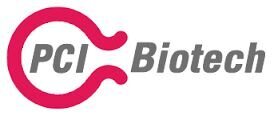Publication of results showing that the PCI technology can significantly improve vaccination treatment in a melanoma model
Lysaker, 9 December 2014 - PCI Biotech (PCIB) the Norwegian biopharmaceutical company, reported today that results from animal studies with PCI Biotech's proprietary technology photochemical internalization (PCI) at University Hospital Zurich have been accepted for publication in Journal of Controlled Release, a high impact pharmaceutical scientific journal. The article has the title "Photosensitisation facilitates cross-priming of adjuvant-free protein vaccines and stimulation of tumour-suppressing CD8 T cells".
In the study PCI Biotech's proprietary photosensitiser has been combined with a model vaccine antigen and the resulting vaccine has been injected into to skin of mice, followed by illumination of the injection site. Earlier studies have shown that PCI-mediated vaccination induces stimulation of so-called cytotoxic T-lymphocytes (CTLs) in the animals. CTLs are immune cells that are considered to be of primary importance for killing tumour cells after therapeutic cancer vaccination. In this article the researchers show that the PCI enhanced immune responses translates into a potent anti-tumour effect in animals, both if used as a prophylactic vaccine and if used for therapeutic vaccination in animals with already established tumours. The results of the study further substantiate PCI as a very potent CTL-inducing technology that can be used to enhance the effect of cancer immunotherapies involving therapeutic cancer vaccination.
About therapeutic cancer vaccination
The potential of therapeutic cancer vaccination - vaccines that treat cancer by inducing or strengthening an immune response - has long been recognised by the pharmaceutical industry. The past few years there has been a renewed focus on such vaccines, and the first vaccine was approved by FDA in 2010. Since then, pharmaceutical companies have announced a large number of development milestones for new therapeutic cancer vaccines, and the market for such vaccines is projected to grow to a value of approximately $8 billion by 2019. This is a promising area, but there are still important unsolved issues and several companies have recently reported failed clinical studies. Vaccination with protein or peptide antigens often fails to generate the strong cytotoxic responses that are needed for successful therapeutic vaccination. An important probable reason for this is insufficient access of antigens to the appropriate machinery inside the antigen presenting cells. Antigens typically enter these cells through endocytosis and PCI may be utilised to deliver these antigens to the immunisation machinery that is responsible for the cytotoxic immune response through the so-called MHC class-I-restricted antigen presentation.
About PCI Biotech
PCI Biotech is a cancer focused biopharmaceutical company headquartered in Norway and listed on the Oslo Stock Exchange (Axess). The company is developing therapeutic products based on its proprietary photochemical internalisation (PCI) technology. Originating from world leading research at the Norwegian Radium Hospital, the PCI technology works by inducing triggered endosomal release and may be used to unlock the true therapeutic potential of a wide array of modalities, such as small molecules, ADCs and siRNA. Two programs are currently in clinical Development in patient populations With a high unmet medical need; recurrent head & neck cancer (phase II) and bile duct cancer (phase I/II).
The company is also developing PCI as a CTL induction technology for therapeutic and prophylactic vaccination. It has been demonstrated both in vivo and ex vivo that PCI significantly increases the number of activated antigen-specific CTLs (Cytotoxic T Lymphocytes) by enhancing the MHC I antigen presentation of antigen presenting cells. When applied more specifically to the emerging field of cancer immunotherapy, PCI can be used to enhance the important cytotoxic effect of therapeutic cancer vaccines.
PCI Biotech follows a strategy to create value by improving the effect both of existing cancer drugs and by realising the large potential in new therapeutics, including therapeutic vaccines.
